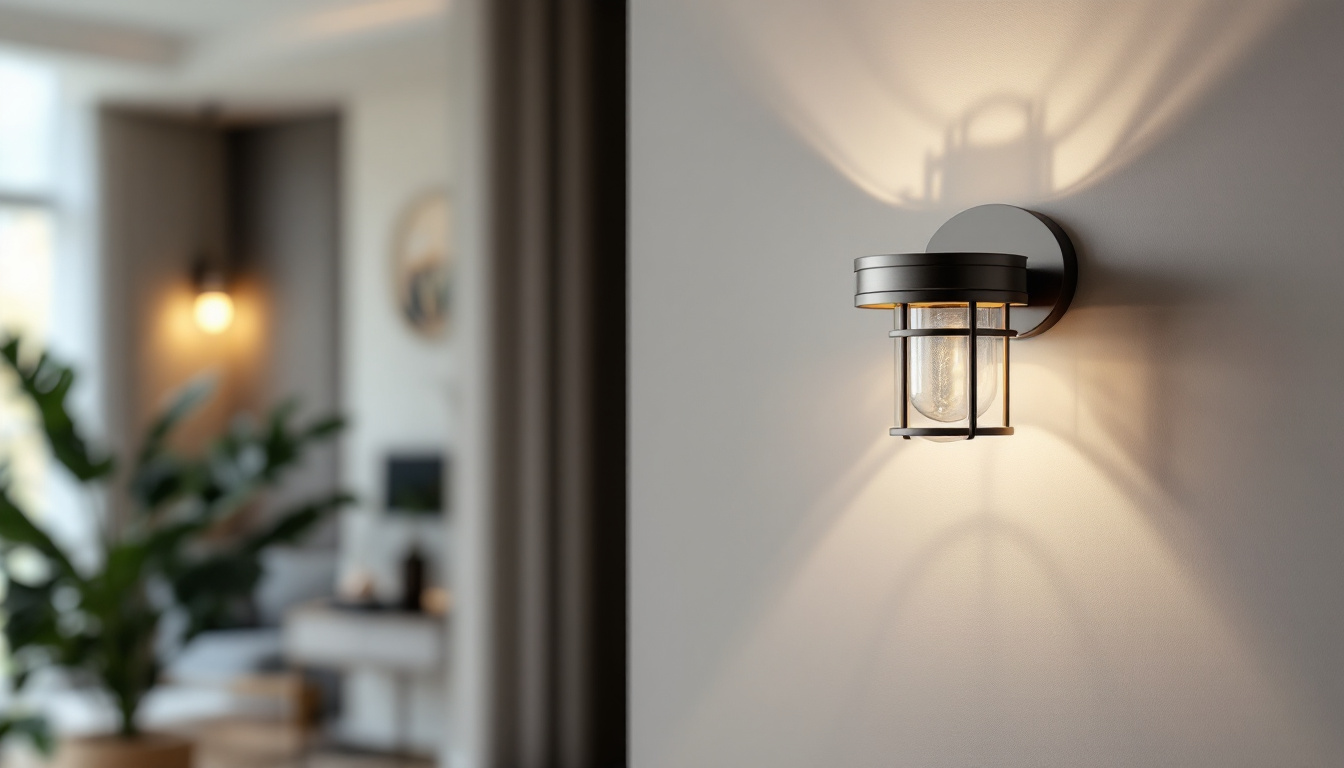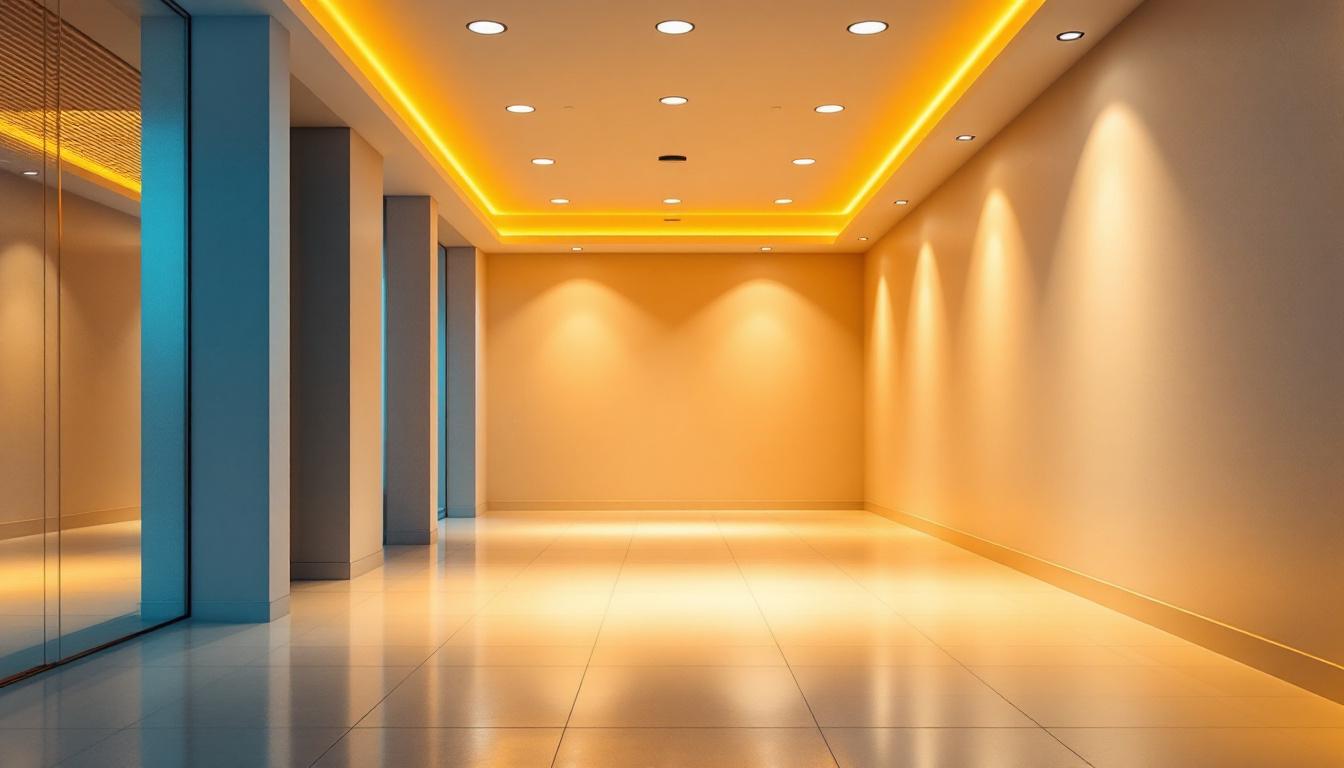
Lighting projects can be intricate and demanding, especially when it comes to commercial spaces like workshops and retail environments. For lighting contractors, understanding the nuances of shop lighting is essential to delivering successful projects. This article focuses on the four essential aspects of shop lighting and highlights common pitfalls to avoid, ensuring that your lighting projects are both efficient and effective.
Proper lighting is not just about visibility; it significantly impacts productivity, safety, and the overall atmosphere of a space. In commercial settings, the right lighting can enhance the customer experience, improve employee morale, and even influence purchasing decisions. A well-lit environment can make a space feel more welcoming and comfortable, encouraging customers to linger longer and explore more. This is particularly important in retail, where the right lighting can highlight products and create an emotional connection that drives sales.
Moreover, different environments require different lighting solutions. For instance, a workshop may need bright, focused lighting for intricate tasks, while a retail space might benefit from softer, more ambient lighting to create an inviting atmosphere. Understanding these needs is crucial for any lighting contractor. Additionally, incorporating natural light into the design can further enhance the ambiance, as studies have shown that exposure to daylight can improve mood and overall well-being. This is especially relevant in office spaces, where employees spend long hours working indoors.
Studies have shown that well-lit environments can boost productivity by reducing eye strain and fatigue. In workshops, where precision is essential, adequate lighting can help workers perform tasks more efficiently. In contrast, poor lighting can lead to mistakes, accidents, and ultimately, lost revenue. Furthermore, the color temperature of the lighting can also play a significant role; cooler tones can increase alertness and focus, while warmer tones can create a more relaxed atmosphere conducive to creativity.
When designing a lighting plan, consider the specific tasks that will be performed in the space. This will help in selecting the appropriate type and intensity of lighting to enhance productivity. For example, in creative environments like design studios or art galleries, adjustable lighting can allow for flexibility in showcasing work and accommodating various activities. Incorporating smart lighting solutions that can be easily controlled and adjusted can further enhance the functionality of the space, catering to the dynamic needs of its users.
Safety is paramount in any workspace. Insufficient lighting can create hazardous conditions, especially in areas where machinery is operated. Ensuring that all areas are well-lit can prevent accidents and injuries, which can lead to costly liabilities. Proper lighting not only aids in visibility but also helps in creating a sense of security among employees and customers alike. When people feel safe in their environment, they are more likely to engage fully and perform at their best.
In addition to general illumination, it is essential to highlight potential hazards, such as stairs, walkways, and equipment. Utilizing task lighting in these areas can provide additional safety measures. Moreover, incorporating motion-sensor lights in high-traffic areas can ensure that spaces are adequately lit when needed, reducing the risk of accidents during off-hours. Regular maintenance of lighting fixtures is also crucial; burnt-out bulbs or flickering lights can create distractions and safety concerns, underscoring the need for a proactive approach to lighting management in any facility.
With various lighting options available, selecting the right type for a shop environment can be daunting. Factors such as energy efficiency, color temperature, and fixture type must be considered to ensure optimal performance.
Energy-efficient lighting solutions, such as LED fixtures, can significantly reduce operating costs over time. While the initial investment may be higher, the long-term savings in energy bills and maintenance make them a wise choice for commercial lighting projects.
Additionally, energy-efficient lighting can contribute to sustainability goals, making it an attractive option for environmentally conscious businesses. Many local governments also offer incentives for businesses that invest in energy-efficient technologies, further offsetting the initial costs and encouraging shops to adopt greener practices. This not only enhances the brand image but also appeals to a growing demographic of eco-minded consumers who prioritize sustainability in their purchasing decisions.
The color temperature of lighting can influence the mood and functionality of a space. For example, cooler temperatures (5000K and above) are often used in workshops to promote alertness and focus, while warmer temperatures (3000K to 4000K) are more suitable for retail environments to create a welcoming atmosphere.
Understanding the psychological effects of color temperature can help contractors make informed decisions that cater to the specific needs of the space. Moreover, the right color temperature can enhance product displays, making items appear more vibrant and appealing to customers. For instance, jewelry stores often utilize warmer light to enhance the sparkle of diamonds, while clothing retailers might opt for cooler light to accentuate the true colors of fabrics. By strategically selecting color temperatures, shop owners can not only improve the aesthetic appeal of their merchandise but also influence customer behavior and increase sales.
Even seasoned lighting contractors can fall victim to common mistakes that can lead to costly repercussions. Here are some pitfalls to watch out for when planning lighting projects.
A well-thought-out lighting layout is fundamental to achieving the desired results. Many contractors make the mistake of placing fixtures without considering the overall design and functionality of the space. This can lead to uneven lighting, dark spots, and areas that are either over-lit or under-lit.
To avoid this, it is essential to create a lighting plan that takes into account the layout of the space, the tasks being performed, and the desired ambiance. Utilizing lighting design software can help visualize the layout before installation.
Control systems, such as dimmers and sensors, can enhance the flexibility and efficiency of lighting systems. Neglecting to incorporate these systems can result in wasted energy and reduced functionality. For instance, installing motion sensors in areas that are not frequently used can help save energy by ensuring lights are only on when needed.
By integrating control systems into the design, contractors can provide clients with greater control over their lighting environment, leading to increased satisfaction and energy savings.
Maintenance is a critical aspect of any lighting project that is often overlooked. Selecting fixtures that are difficult to maintain or require frequent bulb replacements can lead to increased costs and downtime. It is essential to consider the long-term maintenance needs of the lighting system when making selections.
Choosing durable fixtures and energy-efficient bulbs can minimize maintenance efforts and costs, ensuring that the lighting system remains functional and effective over time.
As technology continues to evolve, so do the possibilities for lighting design. Incorporating advanced technologies can enhance the functionality and efficiency of lighting systems, providing added value to clients.
Smart lighting solutions allow for greater control and customization of lighting environments. Features such as remote control, scheduling, and integration with other smart devices can enhance user experience and energy efficiency.
For contractors, understanding how to implement these technologies can set them apart in a competitive market. Educating clients on the benefits of smart lighting can also lead to more informed decisions and greater satisfaction.
Utilizing lighting design software can streamline the planning process, allowing contractors to visualize their designs before installation. These tools can help in creating accurate layouts, calculating lighting levels, and ensuring compliance with regulations.
Investing in such software can improve the efficiency of the design process and enhance communication with clients, leading to more successful project outcomes.
Lighting projects, particularly in commercial settings, require careful planning and execution. By understanding the importance of proper lighting, choosing the right types of fixtures, and avoiding common pitfalls, lighting contractors can deliver successful projects that meet client needs.
Incorporating technology and maintaining a focus on energy efficiency can further enhance the value of lighting solutions. As the industry evolves, staying informed about the latest trends and technologies will ensure that contractors remain competitive and provide the best possible service to their clients.
The lighting industry is constantly changing, with new technologies and techniques emerging regularly. Contractors must commit to continuous learning and adaptation to stay ahead of the curve. Attending industry conferences, participating in training sessions, and engaging with professional organizations can provide valuable insights and networking opportunities.
By fostering a culture of learning and innovation, contractors can not only improve their skills but also enhance the quality of their projects, ultimately leading to greater client satisfaction and business success.
In conclusion, successful lighting projects hinge on a deep understanding of the unique needs of each space, careful planning, and the avoidance of common mistakes. By focusing on the four essential aspects of shop lighting outlined in this article, lighting contractors can ensure that their projects are not only visually appealing but also functional and efficient.
With the right approach, lighting can transform spaces, enhance productivity, and create inviting atmospheres that resonate with clients and customers alike. Embracing technology and committing to ongoing education will further empower contractors to deliver exceptional lighting solutions that stand the test of time.
Ready to elevate your lighting projects with the best in spec-grade lighting products? Look no further than LumenWholesale, where we provide contractors with exceptional quality at wholesale prices. Say goodbye to local distributor markups and hello to our extensive selection that meets rigorous industry standards. Plus, with free shipping on bulk orders, you can trust that you’re getting premium lighting solutions at the best value, with no hidden fees. Make your next project shine and experience the unbeatable value of wholesale lighting with LumenWholesale today.

Explore the transformative impact of electric tools on lighting design and installation.

Discover expert insights on LED sconce light fixtures with our comprehensive guide tailored for lighting contractors.

Illuminate your closet with the perfect light fixture! Discover essential tips, types, and installation advice to transform your storage space into a well-lit, functional area..

Discover how motion recessed lights enhance safety in lighting installations, reduce accidents by up to 30%, and improve energy efficiency—upgrade your space today!.